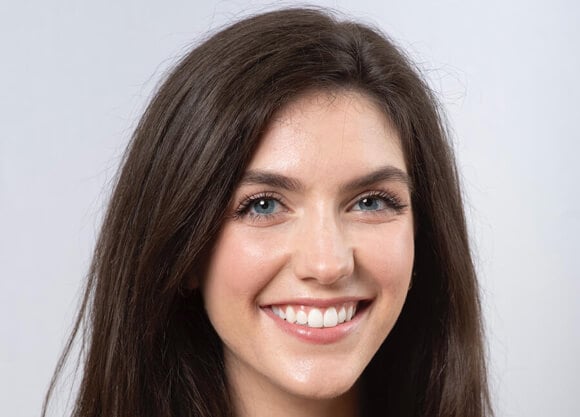
Artist and fourth-year medical student humanizes the patient experience
April 19, 2024

April 19, 2024

Schofield said she created the project with the goal of humanizing the patient experience by highlighting the non-clinical impact of a life-altering illnesses such as cancer.
“By sharing this story through a medical humanities lens as a written and visual arts project, it is my goal for medical students, physicians and other healthcare professionals who interact with this project to reflect on the experiences of this patient, then apply what they learned to the care of their own patients,” said Schofield.
Schofield connected with the subject of her project shortly after she embarked on her third-year clinical field rotations.
“When I was the field, I began noticing the ways that cancer, specifically, seemed to be the most poignant example of how illness doesn’t just impact you in one way,” Schofield said. “I think med students can get so focused on the details, the information and the data, that it’s easy to lose sight that this is a real person dealing with a horrible disease that’s changing how they interact with their family, their sense of spirituality, their self-esteem and how they walk through life. I found myself wishing we could talk and think about that more in the clinical setting.”
Schofield said most medical students enter training with a natural sense of empathy and a desire to connect with patients in a positive way, but research has shown empathy tends to decline during medical school. As a medical student, Schofield found a remedy by leaning into the medical humanities as a concentration.
In writing her capstone project, Schofield describes how the field of medical humanities evaluates how written and visual arts, social sciences, philosophy and sociology relate to medicine. By providing unique insight into the human condition within the context of medical intervention, illness and suffering, the medical humanities help clinicians remember the person behind the diagnosis.
“With the medical humanities, whether it was writing, or poetry, or artwork, all of those experiences taught me that they’re such a great tool to explore what you’re feeling, to explore what you’ve learned in the medical setting and to sit down and process things that you’ve seen,” Schofield said.
A talented artist, Schofield developed the paintings of “Through a Patient’s Eyes” to present viewers with four distinct images documenting devasting and uplifting milestones in her subject’s cancer journey.
The series begins with “The Phone Call,” breaking into a typical day in the subject’s life. “In the Storm,” depicts the impacts of surgery and treatment. “A Sense of Peace” brings into sharp focus the emotional good news of results one year after completing treatment. The final image, “On the Other Side,” resonates with a sense of quiet gratitude.
In addition to her hope that this series will help those in medicine to remain mindful and empathetic of the person in their care, Schofield said the project also brought healing to the subject of her paintings.
“She had buried this experience after it happened years ago; and she never really processed what she went through. It was really, really brave for her to agree to do this. We had lots of talks and it was super emotional going through the storytelling process with her,” said Schofield. “But when I showed her the final project, she realized sharing her story might make an impact and it might inspire future doctors to approach their patients with more empathy. Now, she realizes how strong and resilient she is and she feels like she can look at that experience in a different light.”
Schofield said the opportunity to help someone heal by combining her passion for art and medicine will be something she carries with her as she enters the medical profession.
“As an artist and future family physician, this project was incredibly fulfilling to create,” Schofield said. “It allowed me to explore the topics that I am most passionate about, including humanism and empathy in medicine, the human experience of illness and the intersection of art and medicine. I am confident that the lessons learned from this project will continue to shape the way I care for my patients going forward.”
Quinnipiac Today is your source for what's happening throughout #BobcatNation. Sign up for our weekly email newsletter to be among the first to know about news, events and members of our Bobcat family who are making a positive difference in our world.
Sign Up Now